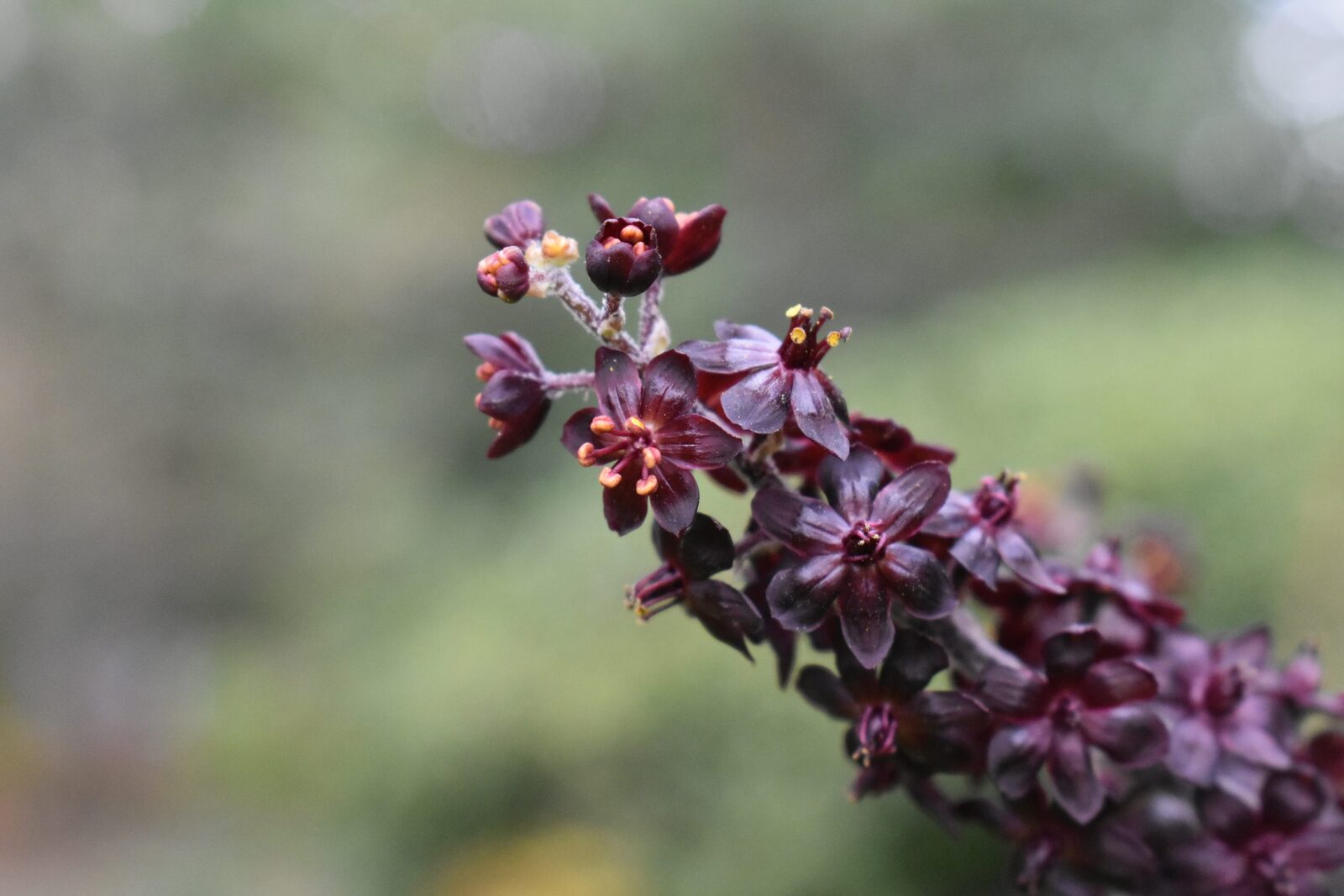
Welcome to the intriguing world of Veratrum, a genus of flowering plants that is shrouded in mystery and fascination. With over 200 species, Veratrum has captured the attention of botanists, herbalists, and nature enthusiasts alike. These enigmatic plants have a rich history and a wealth of unique characteristics that set them apart from other botanical wonders. In this article, we will explore 17 fascinating facts about Veratrum that will leave you in awe of their beauty and complexity. From their striking appearance to their medicinal properties and even their role in folklore, Veratrum is a captivating subject that will ignite your curiosity and deepen your appreciation for the wonders of the plant kingdom.
Key Takeaways:
- Veratrum, also known as “false hellebore,” is a mysterious and toxic plant with a rich history in traditional medicine and cultural practices, but must be handled with extreme caution due to its poisonous nature.
- Despite its toxic beauty, Veratrum has unique qualities that make it a captivating and enigmatic plant, playing important roles in ecological interactions and holding potential in pharmacological research.
Veratrum’s Mysterious Origins
Veratrum, also known as “false hellebore,” is a fascinating plant that has puzzled botanists for centuries. Its exact origins remain a mystery, with various species found in different regions around the world.
Deadly Beauty
Despite its alluring appearance, Veratrum contains potent toxic compounds. The plant’s leaves, roots, and flowers are highly poisonous, posing a significant risk to humans and animals if ingested.
Traditional Medicinal Uses
Throughout history, Veratrum has been utilized in traditional medicine for a range of ailments. It has been used as a treatment for headaches, fevers, and digestive disorders. However, its use must be approached with extreme caution due to its toxicity.
The Devil’s Bite
Veratrum has gained the nicknames “devil’s bite” and “hellbine” due to its toxic nature. In folklore, it was believed that the plant was associated with dark forces and could cause harm if handled carelessly.
Diverse Species
There are approximately 25 known species of Veratrum, each with its distinct characteristics and habitats. These species can be found in various parts of the world, including North America, Europe, and Asia.
Veratrum as an Ornamental Plant
Despite its toxicity, some species of Veratrum are cultivated for their ornamental value. The tall, elegant flower spikes with vibrant blooms can add a touch of drama to gardens and flower arrangements.
Invasive Potential
Veratrum has the potential to become invasive in certain ecosystems. Its ability to spread rapidly and outcompete native plants can have detrimental effects on biodiversity and ecosystem balance.
Veratrum’s Role in Ecological Interactions
Veratrum plays a crucial role in ecological interactions by acting as a host plant for various insect species. It provides a food source and habitat for certain butterflies, bees, and other pollinators.
Unique Morphology
Veratrum possesses distinct morphological characteristics that set it apart from other plants. Its tall, erect stems, broad leaves, and large flower clusters create a striking visual impression.
Veratrum in Traditional Ceremonies
In some indigenous cultures, Veratrum holds ceremonial significance. It is used in rituals and spiritual practices, symbolizing strength, transformation, and protection.
Veratrum’s Potential in Pharmacology
Despite its toxicity, Veratrum holds potential in pharmacological research. Scientists have discovered compounds within the plant that may have therapeutic applications in treating certain diseases, such as cancer.
Veratrum’s Natural Pest Repellent Properties
Veratrum contains compounds that act as natural repellents to certain pests and insects. This makes it a valuable asset in organic gardening and pest control practices.
Veratrum’s Role in Agriculture
In certain agricultural practices, Veratrum has been used as a natural fertilizer due to its high nutrient content. Its decomposition contributes to soil enrichment and promotes plant growth.
Veratrum’s Historical Significance
Veratrum has a rich historical significance, with mentions dating back to ancient civilizations. It was referenced in traditional medicine systems like Ayurveda and has been part of cultural practices for centuries.
Veratrum’s Survival in Extreme Environments
Veratrum displays an incredible ability to survive in extreme environments, such as high altitudes and harsh climates. This adaptability is a testament to its resilience as a plant species.
Conservation Concerns
Due to habitat loss and over-harvesting, some species of Veratrum are facing conservation concerns. Efforts are being made to protect and preserve these plants to prevent their decline.
Veratrum’s Cryptic Beauty
Veratrum’s toxic nature and enigmatic qualities add to its allure. Its cryptic beauty serves as a reminder of the intricate and delicate balance present in the natural world.
These 17 enigmatic facts about Veratrum showcase the plant’s intriguing characteristics, from its mysterious origins to its toxic beauty. Despite its dangers, Veratrum has played an important role in traditional medicine, cultural practices, and ecological interactions. While caution must always be exercised when dealing with this plant, Veratrum continues to captivate our imagination with its unique attributes and enigmatic nature.
Conclusion
In conclusion, Veratrum is a fascinating plant with various enigmatic facts that make it stand out. From its toxicity and use in traditional medicine to its unique growth patterns and historical significance, Veratrum has a rich and intriguing history. Its role in ecology and potential therapeutic applications continue to be subjects of research and study. By exploring the 17 enigmatic facts about Veratrum, we gain a deeper appreciation for the complexity and beauty of the plant kingdom.
FAQs
Q: Is Veratrum poisonous?
A: Yes, Veratrum is highly poisonous. All parts of the plant, including the leaves, stems, and roots, contain toxic alkaloids.
Q: Can Veratrum be used in herbal medicine?
A: In controlled and expertly prepared doses, Veratrum has been used in traditional medicine for various purposes. However, its use should always be approached with caution due to its toxicity.
Q: What are the potential therapeutic applications of Veratrum?
A: Veratrum has been studied for its potential anti-cancer properties, as it contains compounds that can inhibit the growth of tumor cells. Further research is needed in this area.
Q: How does Veratrum grow?
A: Veratrum is a perennial plant that prefers moist soil and cool climates. It produces tall, erect stems with large, broad leaves and clusters of flowers.
Q: What is the historical significance of Veratrum?
A: Veratrum has a long history of use in traditional medicine by various cultures around the world. It has also been associated with folklore and legends for its potent properties.
Q: How can Veratrum be identified in the wild?
A: Veratrum can be identified by its large, broad leaves, tall stems, and clusters of small, greenish flowers. It is important to exercise caution while handling the plant due to its toxicity.
Veratrum's enigmatic qualities captivate plant enthusiasts, but there's more to explore in the world of plants. Delve into the fascinating field of botany, where mysteries abound. Discover how alkaloids in kratom tea offer unique properties. Finally, uncover the secrets of herbal medicines and their potential to enhance well-being. Each topic offers a treasure trove of knowledge waiting to be unlocked.
Was this page helpful?
Our commitment to delivering trustworthy and engaging content is at the heart of what we do. Each fact on our site is contributed by real users like you, bringing a wealth of diverse insights and information. To ensure the highest standards of accuracy and reliability, our dedicated editors meticulously review each submission. This process guarantees that the facts we share are not only fascinating but also credible. Trust in our commitment to quality and authenticity as you explore and learn with us.


